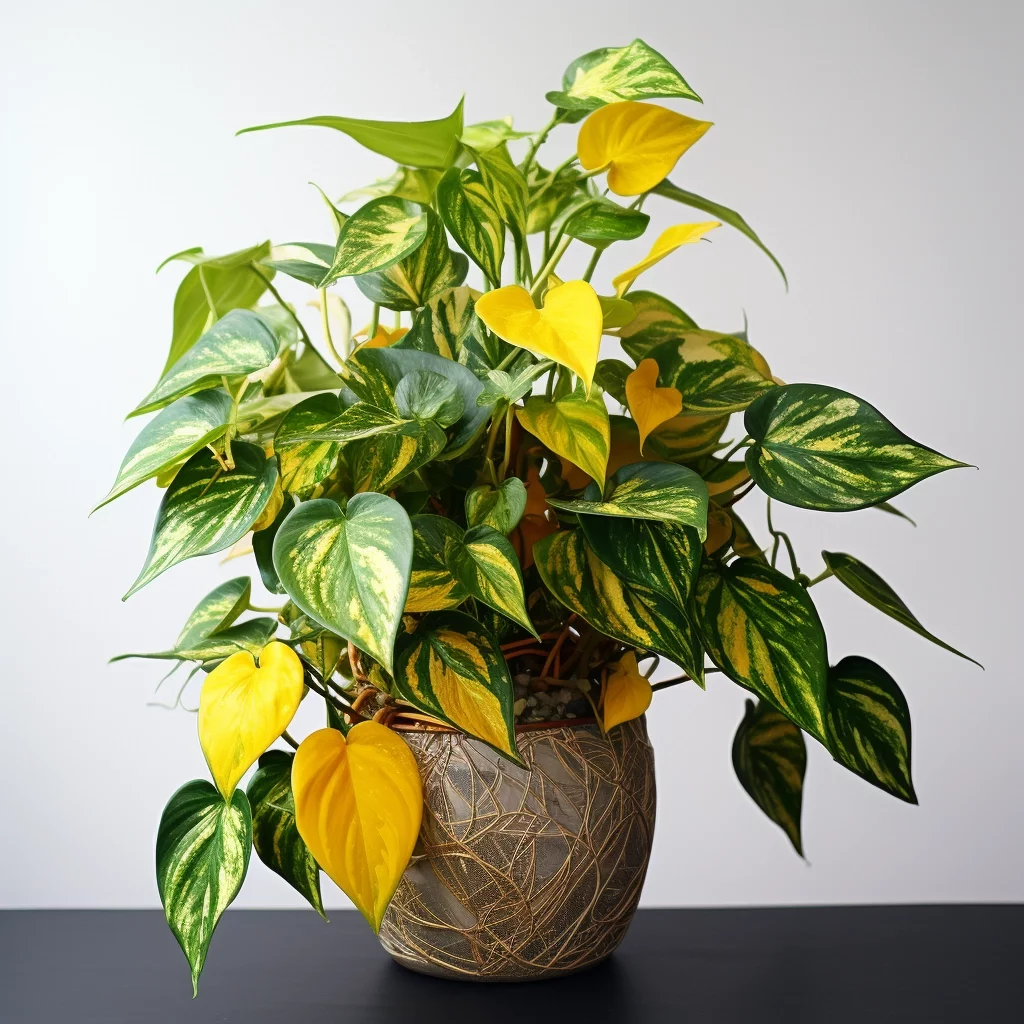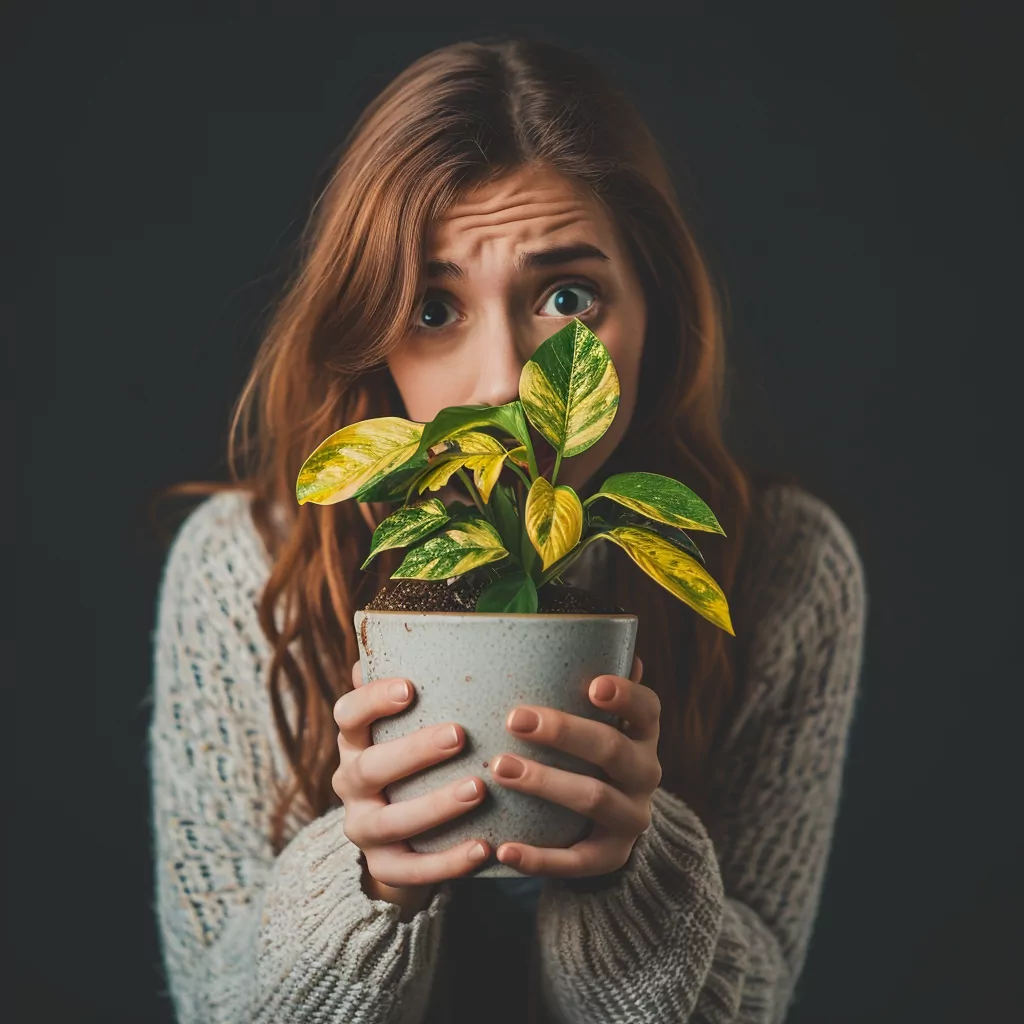Unraveling the Mystery: Yellow Leaves on Plants
Experiencing yellowing leaves on your beloved houseplants can be concerning for any plant enthusiast. Understanding the reasons behind this common issue is key to maintaining healthy, vibrant foliage. In this comprehensive guide, we’ll explore the various causes of leaf yellowing, preventive measures, and effective solutions to rejuvenate your green friends.

Yellow leaves can be a sign of distress in houseplants, often caused by environmental factors or care routines. Here’s a breakdown of the most common causes:
- Watering Woes 💧
- Overwatering: The most frequent culprit. Roots need oxygen, and excess water can lead to root rot.
- Underwatering: Plants with parched roots can’t absorb nutrients effectively, leading to yellow leaves.
- Lighting Issues ☀️
- Too Much Sun: Direct sunlight can scorch leaves, causing them to turn yellow and drop.
- Lack of Light: Insufficient light can weaken your plant, leading to yellowing.
- Nutrient Deficiencies 🌱
- Plants require a balance of nutrients. Deficiencies in nitrogen, iron, or magnesium often lead to yellowing.
- Poor Drainage and Soil Problems 🌍
- Compacted or poor-quality soil can affect root health and nutrient uptake.
- Environmental Stress 🌡️
- Sudden temperature changes, drafts, or low humidity can stress plants, causing leaves to yellow.
- Pest Infestations 🐛
- Pests like spider mites, aphids, or mealybugs can cause yellowing and should be treated promptly.
Prevention: Keeping Your Plants Happy and Healthy
To prevent yellow leaves, it’s crucial to understand and meet your plant’s specific needs:
- Water Smartly: Understand your plant’s watering needs. Use your finger to check soil moisture before watering.
- Optimize Light Exposure: Ensure your plant receives the right amount and intensity of light.
- Nutrition Balance: Use a balanced, all-purpose fertilizer during the growing season.
- Choose the Right Soil: Opt for high-quality, well-draining soil suited to your plant’s preferences.
- Maintain a Consistent Environment: Avoid placing your plants in drafty areas or near heat sources.
- Regular Inspection: Check regularly for pests and treat them early.
Correcting the Situation: Reviving Your Yellowing Plants
Once you notice yellow leaves, here’s what you can do:
- Adjust Watering Habits: Reduce or increase watering frequency based on your plant’s needs.
- Relocate Your Plant: Move it to a more suitable spot if light conditions are not ideal.
- Soil and Fertilizer Check: Test the soil and supplement it with the necessary nutrients.
- Pruning: Remove the yellow leaves to help your plant focus its energy on healthy growth.
Care and Treatment: Nurturing Your Plants Back to Health
- Repotting: If the problem is poor soil or a root-bound plant, consider repotting in a larger container with fresh soil.
- Pest Management: Use natural or chemical pest treatments as appropriate.
- Humidity Control: Increase humidity with a humidifier or pebble tray for tropical plants.
Understanding Specific Plant Needs
Different plants have varying requirements. For instance, succulents and cacti need less water compared to tropical plants like Monsteras or Peace Lilies. Always research your specific plant’s needs for optimal care.
When to Seek Professional Advice
If you’ve tried troubleshooting and your plant’s condition doesn’t improve, consider consulting a local nursery or a plant specialist for tailored advice.
Embracing the Journey of Plant Parenthood 🌿
Caring for houseplants can be a rewarding journey filled with learning experiences. Yellowing leaves is a common issue, but with the right knowledge and care, you can easily overcome this challenge and enjoy the lush beauty of healthy indoor plants.

FAQ: Addressing Yellow Leaves on Houseplants
How do you fix yellowing plant leaves?
To fix yellowing plant leaves, identify the cause first. Adjust watering habits, ensure adequate light, check for pests, and provide appropriate nutrients. If overwatering is the issue, let the soil dry out more between waterings. For underwatering, establish a consistent watering schedule. If the problem is light-related, move the plant to a better-lit area or reduce direct sunlight exposure.
Should you remove yellow leaves from houseplants?
Yes, it’s generally a good idea to remove yellow leaves from houseplants. Yellow leaves are unlikely to turn green again and can drain energy from the plant. Pruning them allows the plant to direct its energy towards healthier growth. Use clean, sharp scissors or pruning shears to remove the yellow leaves close to the stem.
Can yellow leaves turn green again?
Once a leaf turns yellow, it usually cannot turn green again. Yellowing is typically a sign of stress or damage, and the leaf is often beyond recovery. The best course of action is to address the underlying problem causing the yellowing to prevent further leaves from turning yellow.
Do yellow leaves mean my plant is dying?
Not necessarily. Yellow leaves can be a sign of a problem, but they don’t always mean that the plant is dying. By identifying and correcting the issue, whether it’s watering, lighting, nutrient deficiency, or something else, you can often restore your plant to health.
How to tell if yellow leaves are from overwatering or underwatering?
Overwatered plants often have yellow leaves that feel soft and mushy, while underwatered plants have dry, crispy yellow leaves. Additionally, overwatering can lead to root rot, which might be evident upon inspecting the roots. Underwatered plants typically have dry, compacted soil.
How do I fix an overwatered plant?
To fix an overwatered plant, start by reducing your watering frequency. Allow the top inch or two of soil to dry out before watering again. If the plant shows signs of root rot (black, mushy roots), repot it into fresh, well-draining soil, trimming away any damaged roots. Ensure the pot has adequate drainage holes.
What deficiency causes the yellowing of leaves?
The yellowing of leaves can be caused by several nutrient deficiencies. Nitrogen deficiency often results in older leaves turning yellow. Iron deficiency can cause yellowing between the veins of young leaves, and magnesium deficiency can lead to yellowing between the veins of older leaves.
How do I make my indoor plants greener?
To achieve greener indoor plants, start by ensuring they receive the right amount of light – enough to thrive, but not so much that it’s overwhelming. Next, water them appropriately, finding that perfect balance. It’s also crucial to provide the right nutrients. Using a balanced fertilizer during the growing season can be particularly helpful. Additionally, regularly cleaning the leaves from dust improves light absorption. Finally, consider adjusting the humidity levels to cater to the specific needs of your plant for the best results.

